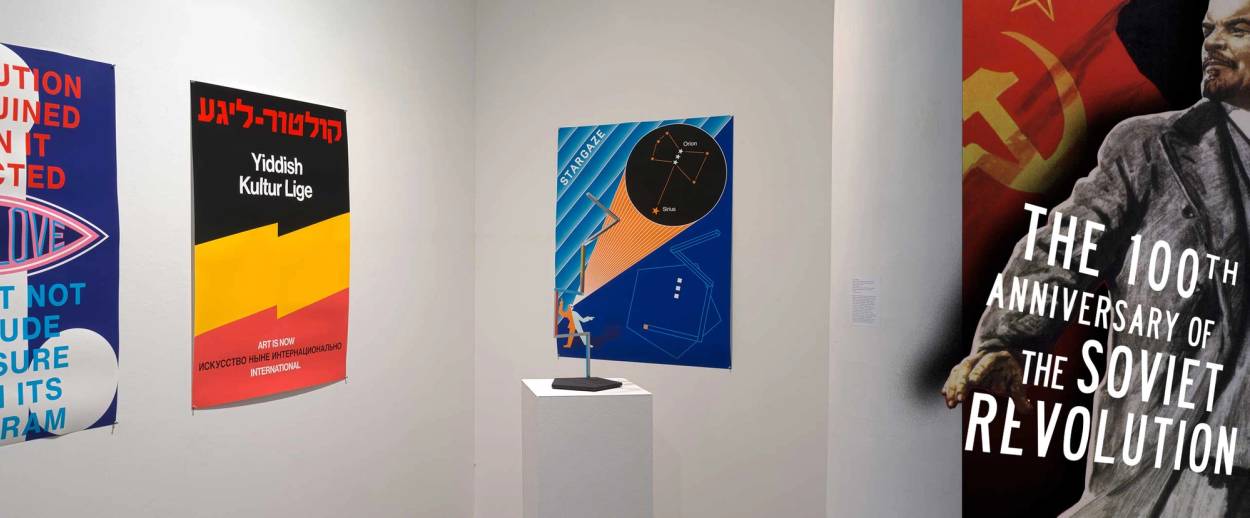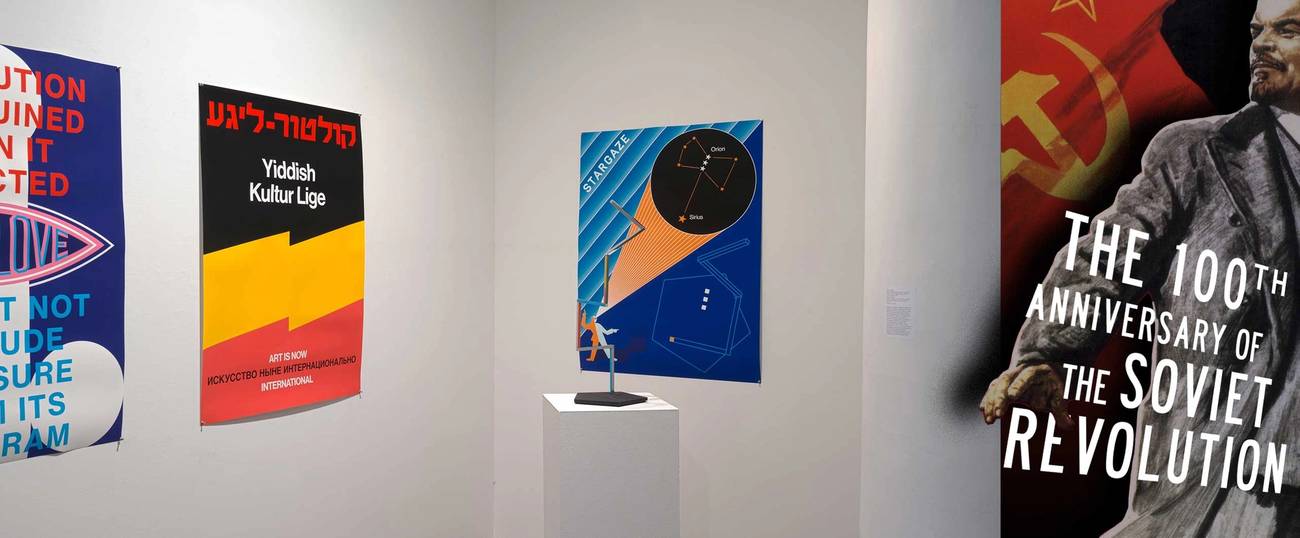Can Officially Sanctioned Soviet Yiddish Culture Be Cool? Where Are the Queers? And Other Tablet Soviet Week Questions
Rokhl’s Golden City: Jewish Bolsheviks, Yiddish songs, ‘Comrade Stalin,’ and the year that changed the world




In her fascinating book Soviet and Kosher: Jewish Popular Culture in the Soviet Union, 1923-1939, Anna Shternshis explains how Jewish Bolsheviks used Yiddish song to promulgate “revolutionary” ideas. These songs—parodies and adaptations of “traditional” Yiddish songs as well as new songs and couplets—reveal “how Jewish activists attempted to construct a new Soviet Jewish culture.” Almost every one of her ethnographic respondents remembered the following, a Yiddish drinking song repurposed to celebrate khaver Stalin:
Lomir trinken a lekhaim
far dem lebn, far dem nayem
un der ershtn, zoln mir khvalyen
undzer liber khaver Stalin
Let us drink a toast
for life, for the new life
and first, let us glorify
our beloved comrade Stalin
Shternshis started her research in the late 1980s and notes that though this song was still remembered (and sung) even decades after the push for a Sovietized Yiddish culture, it was just as often sung at the end of parties, drunkenly (it is a drinking song after all), as parody.
It’s hard to stomach the thought of anyone, especially Jews, singing a song of praise to Stalin. It’s a lot easier though, when it’s so damn catchy.
Here, Psoy Korolenko and Daniel Kahn perform Lomir trinken a lekhayim:
For almost 10 years Korolenko and Kahn have been bringing all kinds of revolutionary songs into their slightly mad dialectic. As the Unternationale, Korolenko and Kahn set Zionist, Bundist, and Communist anthems against each other. No longer matters of life and death, 20th-century anthems become just another text, to be mixed and remixed with a ruthless 21st-century playfulness.
Over at the International Print Center, an exciting new show just opened titled Russian Revolution: a Contested Legacy. Artist Yevgeniy Fiks and curator Masha Chlenova have assembled a revelatory mix of historic materials and contemporary art on the theme of revolution and liberation. Born in the 1970s and firmly post-Soviet, Chlenova, Fiks, and the other featured contemporary artist, Anton Ginzburg, are uniquely positioned to offer new perspectives on the legacy of the 1917 revolution. What struck me most was how daring it felt for an artist like Fiks to engage with the hopeful, utopian aspects of 1917. Yiddishists will probably be familiar with many of the Yiddish language historical posters and art, but Fiks and Chlenova have created an entirely new context for the old images. Seeing Fiks’ Yiddish interpretation of Lissitzky’s Russian Beat the Whites With the Red Wedge, a few feet from actual Lissitzkys is quite an experience.
Each section of the show highlights how personal liberation—for women, Jews, people of color, and queer Russians—intersected, even if briefly, with the Bolshevik revolution. The section on gay American Communist Harry Hay was particularly good. Hay, a founding father of contemporary gay politics, is mostly forgotten today. A few plywood panels with Hay’s words burned into them literally brings Hay’s voice back into the conversation, while also poking fun at woodcutting and printmaking as idealized proletarian art.
Yevgeniy Fiks gleefully engages with historic images and moments, without apology. His painting, Leniniana no. 1, is one of my favorite pieces in the show. Leniniana no. 1 is part of a series in which Fiks reproduces iconic images of Lenin without Lenin. It’s a spooky thing to look at, pulsing with historical resonances. Anyone who lived through the fall of the Berlin Wall and the end of the Soviet Union will immediately recall images of revolutionary statues yanked down and dragged out of frame. Leniniana is the negative space left when revolutions crumble. But Leniniana’s connections go much deeper. It was Stalin who pioneered the manipulation of images to suit the ever-changing political currents. The first instance of Soviet censorship of images was a May 1920 photo of Stalin speaking in front of the Bolshoi Theater, with Trotsky to his side. When Trotsky fell from favor, he and Lev Kamenev were artificially removed from the photo. Trotsky’s disappearance was Photoshop before Photoshop, the original fake news…
Over at the Center for Jewish History, 1917 and the revolutionary impulse is also up for reinterpretation, with mixed results. Through Nov. 1 the CJH lobby is the site of a mixed-media installation titled For Her Own Good by artist Ofri Cnaani. The piece is a “poetic commentary on the public speeches and closed hearings of Emma Goldman,” the most dangerous woman alive. In 1917 Goldman was arrested and tried for anti-war, anarchist activity. Out on bail, she was forbidden from public speaking, leading to her silently surreal appearance before an adoring crowd, the spectacle at the heart of For Her Own Good.
While For Her Own Good evokes that disturbing moment of political silencing, it never quite explains who Emma Goldman was or why I should care. If there had just been a sign somewhere suggesting that those who wanted to learn more about Goldman could go upstairs to the terrific 1917 exhibit I probably could’ve relaxed. But let’s be honest, I don’t relax.
Upstairs at CJH, 1917: How One Year Changed the World is the rare museum exhibit that balances a trove of extremely cool artifacts and documents with a compelling narrative of global upheaval. Wanna know more about Emma Goldman? You can see a historic cervical cap and learn about her arrest in 1916 for lecturing on, and distributing material about, birth control. You can also see a letter from The American Hebrew, the national Jewish weekly, to President Woodrow Wilson, praising Wilson for recognizing the new Russian government. “The fact that America was first to recognize the New Russia officially will serve as an inspiration both in this country and in Russia.” Indeed…
***
See: Russian Revolution: A Contested Legacy at the International Print Center through Dec. 16. Not to be missed.
Read: Birobidzhan was supposed to be part of the Jewish Autonomous Oblast, an invention of Stalin’s that would solve the Jewish Problem while populating a buffer zone against eastern aggression. It didn’t work out. The Birobidzhaner Shtern is the only Russian periodical today that still publishes a Yiddish section. They recently featured an interview (in Yiddish) with my friend (and one half of the Unternationale) Daniel Kahn. (Hat tip to my friend, master Yiddish teacher—and former resident of Birobidzhan—Kolya Borodulin.)
Listen: Is the 21st century a post-anthem era? It feels that way. The Unternationale goes back to a time when anthems moved millions and asks us what a 21st-century anthem would even sound like.
ALSO: Did you know there’s a Jewish Museum in Moscow? I didn’t. Also, I’ve never been to Moscow. (Who wants to invite me to Moscow?) Two new exhibits are calling my name: Freedom for All? The History of One People in the Years of Revolution and, what the JMM is calling the first wide-scale (!!!) retrospective of Constructivist genius El Lissitzky in Russia. … Before this centennial year is over there’s still time for one more epic historical conference. Nov. 5 and 6 is YIVO’s Jews In and After the 1917 Russian Revolution. … And one last plug for the French Yiddish deliciousness that is Yerushe: Yiddish Folksongs of Women, on Thursday, Oct. 26 at Jalopy as part of the New York Klezmer Series.
***
This week’s culture column Rokhl’s Golden City focuses on 1917 as part of Tablet’s series analyzing the 100th anniversary of the Soviet Revolution.
Rokhl Kafrissen is a New York-based cultural critic and playwright.